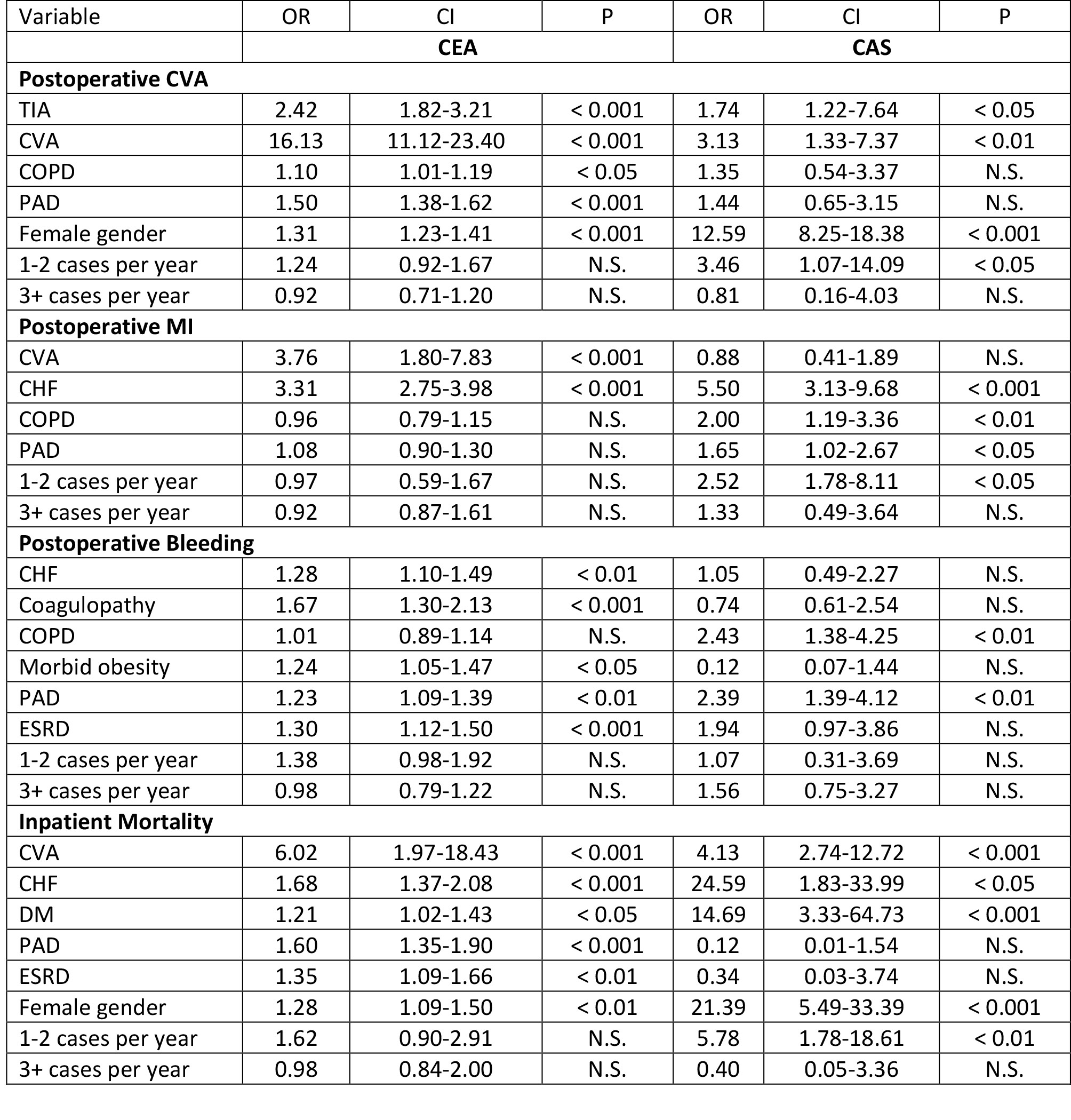Back to 2016 Annual Meeting Program
Predictors of Poor Outcome after Carotid Intervention
Sapan S Desai1, Gilbert R Upchurch, Jr.2, James M Pan1, Douglas M Hood1, Kim J Hodgson1
1Southern Illinois University, Springfield, IL;2University of Virginia, Charlottesville, IL
INTRODUCTION:
A variety of patient factors are known to adversely impact outcomes following carotid endarterectomy (CEA) or stenting (CAS). However, their specific impact upon complications and mortality and how they differ between CEA and CAS is unknown. The purpose of this study is to identify patient and hospital factors that adversely impact outcomes.
METHODS:
Patients who underwent CEA or CAS between 1998 and 2012 were identified using the AHRQ National Inpatient Sample and State Ambulatory Services Databases. A multivariate analysis was completed to evaluate the impact of demographics, patient factors, type of symptoms (TIA or CVA), volume of cases, and interventions upon outcomes, including perioperative complications, length of stay, inpatient mortality, and cost. Significant factors were then used as part of a multivariate regression analysis to determine odds ratios.
RESULTS:
As expected, symptomatic carotid artery disease generally portends a worse outlook following either CEA or CAS. COPD, PAD, and female gender are also predictors of postoperative CVA following CEA and CAS. CHF and PAD are predictors of postoperative MI following either intervention, and CHF, COPD, and PAD are all predictors of postoperative bleeding. The strongest predictors of inpatient mortality include symptomatic disease, CHF, diabetes, and female gender. Surprisingly, female gender was one of the strongest overall predictors of adverse outcome following CAS (OR 21.39 for death; P<0.001). Low volume (< 3 cases per year per practitioner) is a predictor of adverse outcome after CAS only (Table).
CONCLUSIONS:
Higher rates of postoperative stroke and inpatient mortality for women undergoing CAS is an unexpected finding, and may indicate that this population is vulnerable to complications following endovascular management. Low volume is a predictor of complications and subsequent mortality primarily for CAS. 
Back to 2016 Annual Meeting Program
